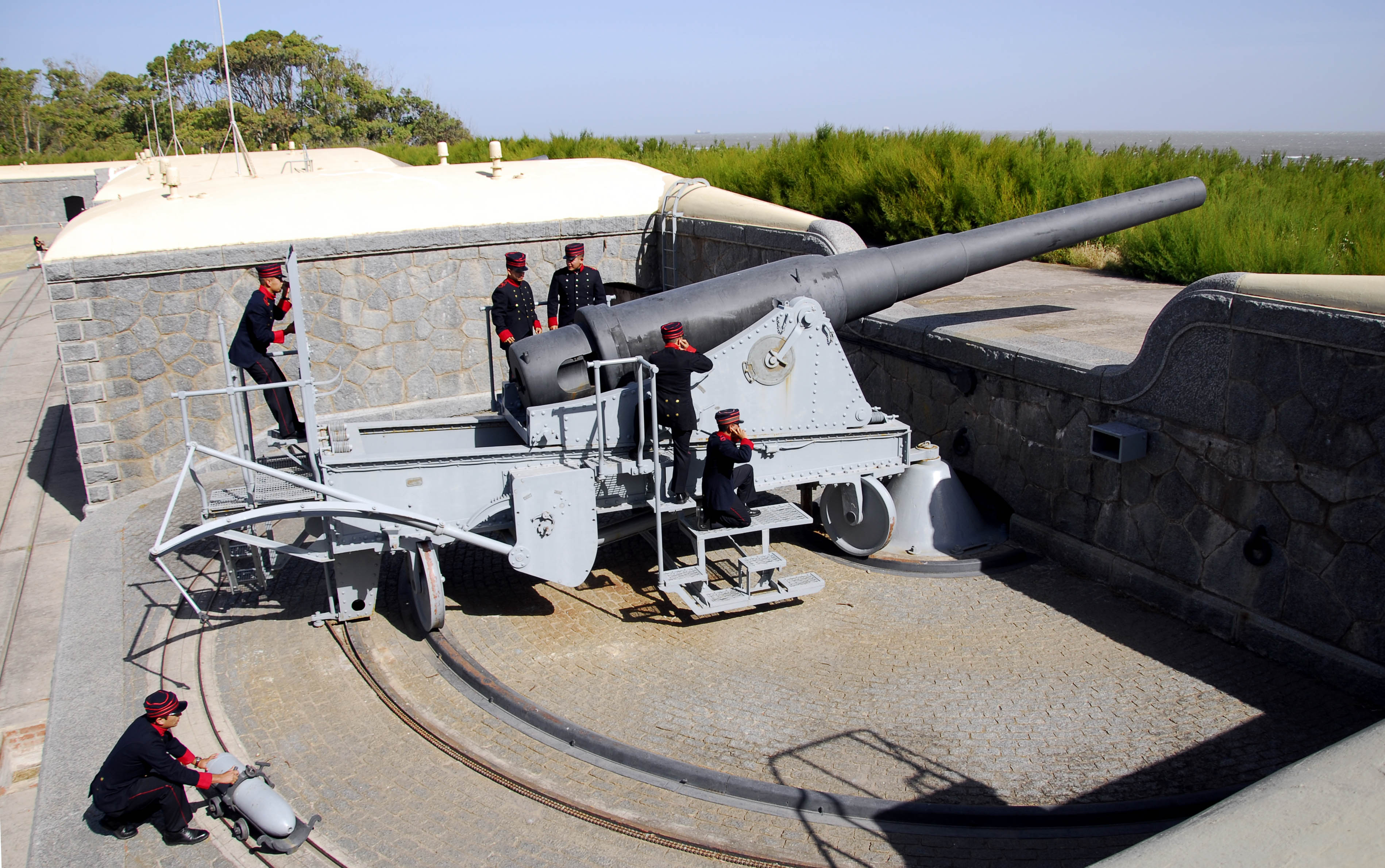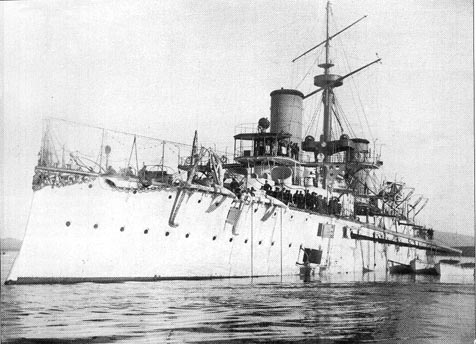|
ARA Nueve De Julio (C-5)
ARA ''Nueve de Julio'' (C-5) was an Argentine Navy cruiser, purchased from the United States Navy on 11 January 1951. ''Nueve de Julio'' was decommissioned in 1978 and sent to Japan to be scrapped. Early career ARA ''Nueve de Julio'' (C-5) was built as in 1936 by Newport News Shipbuilding and Dry Dock Company, Newport News, Virginia. ''Boise'' was a light cruiser, named for the city of Boise, the capital of Idaho. She served in World War II in the Pacific theater before decommissioning on 11 July 1946. Argentine career ''Boise'' was sold to the Argentine Navy on 11 January 1951. During her service in the Argentine Navy, she participated in the 1955 Revolución Libertadora, when she shelled oil depots and military facilities in the city of Mar del Plata, along with a flotilla of destroyers, on 19 September 1955. She was accidentally rammed by her sister (former ) during an exercise on 15 March 1956, which resulted in damage to both cruisers. [...More Info...] [...Related Items...] OR: [Wikipedia] [Google] [Baidu] |
Argentine Declaration Of Independence
What today is commonly referred as the Independence of Argentina was declared on July 9, 1816, by the Congress of Tucumán. In reality, the congressmen who were assembled in Tucumán declared the independence of the United Provinces of South America, which is one of the official names of the Argentine Republic. The Federal League Provinces, at war with the United Provinces, were not allowed into the Congress. At the same time, several provinces from the Upper Peru that would later become part of present-day Bolivia, were represented at the Congress. Causes The 1810 May Revolution followed the deposition of the Spanish king Ferdinand VII by the Napoleonic French. The revolution ended the authority of the Viceroy Cisneros and replaced it with the Primera Junta. When the Spanish monarchy resumed its functions in 1814, Spain was determined to recover control over its colonies in the Americas. Moreover, the royalists from Peru had been victorious at the battles of Sipe-Sip ... [...More Info...] [...Related Items...] OR: [Wikipedia] [Google] [Baidu] |
Puerto Belgrano Naval Base
Port Belgrano Naval Base ( es, Base Naval Puerto Belgrano - BNPB) is the largest naval base of the Argentine Navy, situated next to Punta Alta, near Bahía Blanca, about south of Buenos Aires. It is named after the brigantine ''General Belgrano'' (named after Manuel Belgrano) which sounded the area in late 1824. Home of the Argentine Seas Fleet ( ''Flota de Mar''), it concentrates the major ships and arsenals; and is close to the main bases of other Argentine Navy organisations: Marine's camp ''Baterías'' and Naval aviation's air base ''Comandante Espora'' ( es, Base Aeronaval Comandante Espora - BACE) . History Designed by Italian engineer Luis Luiggi, Puerto Belgrano opened on November 30, 1896, under the name Puerto Militar ( en, Military Port). In 1911, the French-owned railway company Ferrocarril Rosario y Puerto Belgrano opened a broad gauge () line between Puerto Belgrano and Rosario. The harbor was renamed Puerto Belgrano in 1923. The base grew in importance ... [...More Info...] [...Related Items...] OR: [Wikipedia] [Google] [Baidu] |
Maritime Incidents In 1956
Maritime may refer to: Geography * Maritime Alps, a mountain range in the southwestern part of the Alps * Maritime Region, a region in Togo * Maritime Southeast Asia * The Maritimes, the Canadian provinces of Nova Scotia, New Brunswick, and Prince Edward Island * Maritime County, former county of Poland, existing from 1927 to 1939, and from 1945 to 1951 * Neustadt District, Reichsgau Danzig-West Prussia, known from 1939 to 1942 as ''Maritime District'', a former district of Reichsgau Danzig-West Prussia, Nazi Germany, from 1939 to 1945 * The Maritime Republics, thalassocratic city-states on the Italian peninsula during the Middle Ages Museums * Maritime Museum (Belize) * Maritime Museum (Macau), China * Maritime Museum (Malaysia) * Maritime Museum (Stockholm), Sweden Music * ''Maritime'' (album), a 2005 album by Minotaur Shock * Maritime (band), an American indie pop group * "The Maritimes" (song), a song on the 2005 album ''Boy-Cott-In the Industry'' by Classified * "Marit ... [...More Info...] [...Related Items...] OR: [Wikipedia] [Google] [Baidu] |
Maritime Incidents In 1955
Maritime may refer to: Geography * Maritime Alps, a mountain range in the southwestern part of the Alps * Maritime Region, a region in Togo * Maritime Southeast Asia * The Maritimes, the Canadian provinces of Nova Scotia, New Brunswick, and Prince Edward Island * Maritime County, former county of Poland, existing from 1927 to 1939, and from 1945 to 1951 * Neustadt District, Reichsgau Danzig-West Prussia, known from 1939 to 1942 as ''Maritime District'', a former district of Reichsgau Danzig-West Prussia, Nazi Germany, from 1939 to 1945 * The Maritime Republics, thalassocratic city-states on the Italian peninsula during the Middle Ages Museums * Maritime Museum (Belize) * Maritime Museum (Macau), China * Maritime Museum (Malaysia) * Maritime Museum (Stockholm), Sweden Music * ''Maritime'' (album), a 2005 album by Minotaur Shock * Maritime (band), an American indie pop group * "The Maritimes" (song), a song on the 2005 album ''Boy-Cott-In the Industry'' by Classified * "Maritime ... [...More Info...] [...Related Items...] OR: [Wikipedia] [Google] [Baidu] |
Cold War Cruisers Of Argentina
Cold is the presence of low temperature, especially in the atmosphere. In common usage, cold is often a subjectivity, subjective perception. A lower bound to temperature is absolute zero, defined as 0.00K on the Kelvin scale, an absolute thermodynamic temperature scale. This corresponds to on the Celsius scale, on the Fahrenheit scale, and on the Rankine scale. Since temperature relates to the thermal energy held by an object or a sample of matter, which is the kinetic energy of the random motion of the particle constituents of matter, an object will have less thermal energy when it is colder and more when it is hotter. If it were possible to cool a system to absolute zero, all motion of the particles in a sample of matter would cease and they would be at complete rest in the classical physics, classical sense. The object could be described as having zero thermal energy. Microscopically in the description of quantum mechanics, however, matter still has zero-point energy ... [...More Info...] [...Related Items...] OR: [Wikipedia] [Google] [Baidu] |
1936 Ships
Events January–February * January 20 – George V of the United Kingdom and the British Dominions and Emperor of India, dies at his Sandringham Estate. The Prince of Wales succeeds to the throne of the United Kingdom as King Edward VIII. * January 28 – Britain's King George V state funeral takes place in London and Windsor. He is buried at St George's Chapel, Windsor Castle * February 4 – Radium E (bismuth-210) becomes the first radioactive element to be made synthetically. * February 6 – The IV Olympic Winter Games open in Garmisch-Partenkirchen, Germany. * February 10– 19 – Second Italo-Ethiopian War: Battle of Amba Aradam – Italian forces gain a decisive tactical victory, effectively neutralizing the army of the Ethiopian Empire. * February 16 – 1936 Spanish general election: The left-wing Popular Front coalition takes a majority. * February 26 – February 26 Incident (二・二六事件, ''Niniroku Jiken''): The Impe ... [...More Info...] [...Related Items...] OR: [Wikipedia] [Google] [Baidu] |
Ships Built In Newport News, Virginia
A ship is a large watercraft that travels the world's oceans and other sufficiently deep waterways, carrying cargo or passengers, or in support of specialized missions, such as defense, research, and fishing. Ships are generally distinguished from boats, based on size, shape, load capacity, and purpose. Ships have supported exploration, trade, warfare, migration, colonization, and science. After the 15th century, new crops that had come from and to the Americas via the European seafarers significantly contributed to world population growth. Ship transport is responsible for the largest portion of world commerce. The word ''ship'' has meant, depending on the era and the context, either just a large vessel or specifically a Full-rigged ship, ship-rigged sailing ship with three or more masts, each of which is Square rig, square-rigged. As of 2016, there were more than 49,000 merchant ships, totaling almost 1.8 billion Deadweight tonnage, dead weight tons. Of these 28% were oil t ... [...More Info...] [...Related Items...] OR: [Wikipedia] [Google] [Baidu] |
List Of Ships Of The Argentine Navy
This list includes all major warships that entered service with the Argentine Navy since being formally established in the 1860s.In 1861 the modern Argentine Republic was born, after the Battle of Pavón. It also includes ships that were purchased by Argentina but did not enter service under Argentine flag. The list does not include vessels prior to the 1860s; and it also excludes auxiliary ships (tugs, transports, colliers, tankers, scientific vessels, etc.) which are listed separately. In addition, there is a separate list of ships currently in service with the Argentine Navy, regardless the type. The list is organized by type of ship, by class within each type, and by entry date within each class. Service entry dates indicate the ship's commissioning into the Argentine Navy, and not the ship's entry in service with another navy unless specifically said. Naming tradition The current norms establish naming conventions for Argentine Navy ships according to their type, so ... [...More Info...] [...Related Items...] OR: [Wikipedia] [Google] [Baidu] |
List Of Cruisers
This is a list of cruisers, from 1860 to the present. It includes torpedo, unprotected, protected, scout, light, armoured, battle-, heavy and missile cruisers. Dates are launching dates. Africa South Africa ; Protected cruiser * SATS ''General Botha'' (1885, ex-HMS ''Thames'') - Assigned 1922, scuttled 1947. Americas Argentina ; Torpedo cruiser * (1893) - Decommissioned 1927 ; Protected cruisers * (1886) - Decommissioned 1927 * ''Necochea'' (1890) - Renamed ''Veinticinco de Mayo'', decommissioned 1921 * (1892) - Discarded 1930 * (1895) - Retired 1932 ; Armored cruisers * ** (1895) - Retired 1934 ** (1896) - Retired 1935 ** (1897) - Retired 1947 ** (1897) - Retired 1954 ** ''Bernardino Rivadavia'' (1902) - Sold to Japan before delivery 1904, renamed ''Kasuga'', discarded 1945 ** ''Mariano Moreno'' (1903) - Sold to Japan before delivery 1904, renamed ''Nisshin'', retired 1935 ; Heavy cruisers * ** (1929) - Scrapped 1960 ** (1929) - Scrapped 1962 ; Light cruis ... [...More Info...] [...Related Items...] OR: [Wikipedia] [Google] [Baidu] |
Falklands War
The Falklands War ( es, link=no, Guerra de las Malvinas) was a ten-week undeclared war between Argentina and the United Kingdom in 1982 over two British dependent territories in the South Atlantic: the Falkland Islands and its territorial dependency, South Georgia and the South Sandwich Islands. The conflict began on 2 April, when Argentina invaded and occupied the Falkland Islands, followed by the invasion of South Georgia the next day. On 5 April, the British government dispatched a naval task force to engage the Argentine Navy and Air Force before making an amphibious assault on the islands. The conflict lasted 74 days and ended with an Argentine surrender on 14 June, returning the islands to British control. In total, 649 Argentine military personnel, 255 British military personnel, and three Falkland Islanders were killed during the hostilities. The conflict was a major episode in the protracted dispute over the territories' sovereignt ... [...More Info...] [...Related Items...] OR: [Wikipedia] [Google] [Baidu] |
Museum Ship
A museum ship, also called a memorial ship, is a ship that has been preserved and converted into a museum open to the public for educational or memorial purposes. Some are also used for training and recruitment purposes, mostly for the small number of museum ships that are still operational and thus capable of regular movement. Several hundred museum ships are kept around the world, with around 175 of them organised in the Historic Naval Ships AssociationAbout The Historic Naval Ships Association (the international website. Accessed 2008-06-06.) though many are not naval museum ships, from general merchant ships to [...More Info...] [...Related Items...] OR: [Wikipedia] [Google] [Baidu] |






